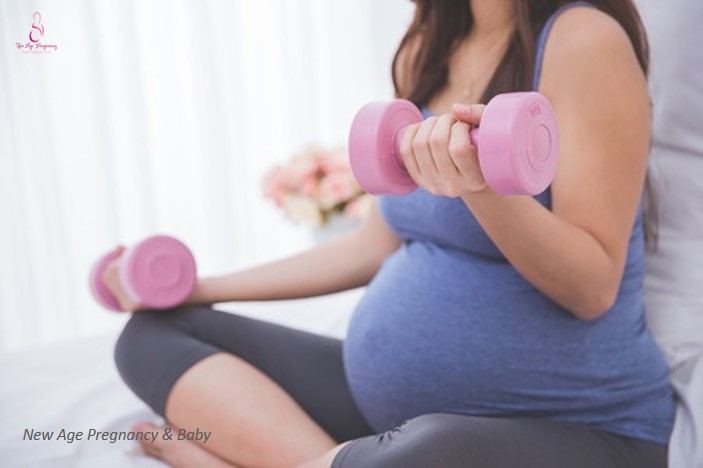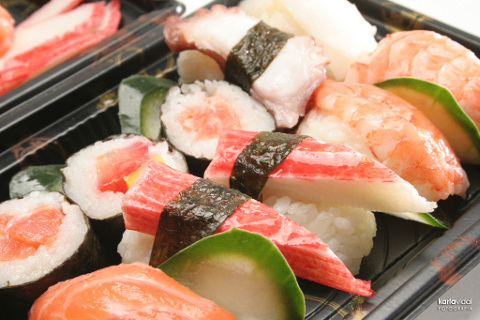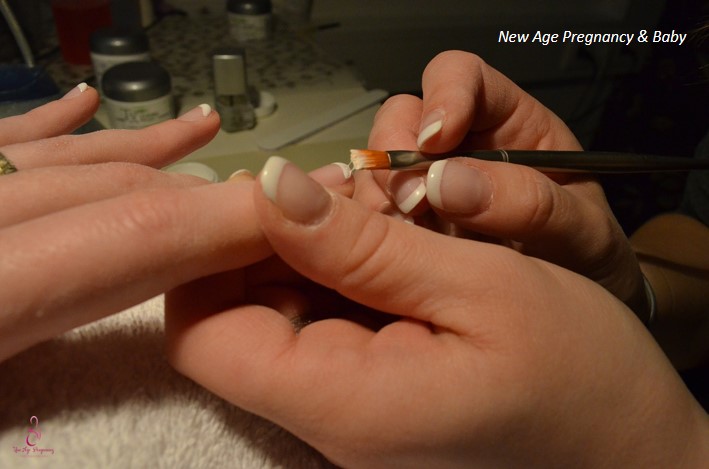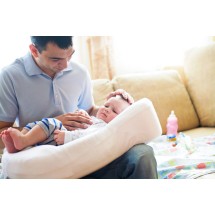
Right from the get-go, expectant mums are bombarded by advice, suggestions and warnings from all angles. It can be difficult to take it all in, to know what’s real and what’s based on cultural or religious superstition. We debunk some of the more common myths for you.
Myth #1: Pregnant women should eat for two.
Everyone around you may be telling you to “duo chi duo chi” (literally translated eat more, eat more in mandarin), but the reality is that your growing foetus only needs a mere 300 extra calories a day. That’s roughly the number of calories in a glass of skim milk and half a sandwich. While you do need to eat more than usual, you definitely shouldn’t be stuffing in two adult-sized portions at each meal!
Remember that it’s not easy to drop the extra pregnancy pounds after birth. Also, women who gain too much weight when they are pregnant have a higher risk of a cesarean section or a difficult natural vaginal delivery.
Myth #2: Eating pineapple will bring on early labour
It may do, but only if you are planning to eat a whole pot of the stuff! Fresh pineapple contains the enzyme bromelain, which is thought to help to soften your cervix and thus bring on labour.
Each pineapple contains a very small amount of bromelain, and that mainly in its core, which most of us do not like to eat. You would need to eat as many as seven full pineapples to see any major effect, by which time you would probably experience a severe case of diarrhea anyway. So too much pineapple would not be advisable anyway, because prolonged diarrhea can cause dehydration which is dangerous for you and baby. And tummy upsets are no fun for anyone, least of all a pregnant you.
If you’re still worried, you can always take processed pineapple instead of the fresh fruit, and most of the bromelain is destroyed by the process of canning or juicing.

Myth #3: You can’t eat sushi.
There is nothing inherently wrong with eating raw fish, as long as you know it is very fresh and prepared in a sterile environment. When in doubt, skip raw foods of any kind, due to the risk of food poisoning from contamination.
Sushi is permissible except for king mackerel, shark, tilefish and swordfish, which have high mercury content. Tuna, which also has relatively high levels of mercury, should also be consumed in moderation.
Eating two servings of fish per week is actually beneficial for you and baby. Omega-3 fatty acids, which are prevalent in fish like salmon and cod, can help with baby’s brain development and vision. Fish and other seafood are also great sources of lean protein and vitamin B.
Myth #4: A bigger baby is a better baby.
Healthy newborn babies usually weigh between 2.7-4kilograms (6-9 pounds). Baby’s weight is typically dependent on genes, gender, the mother’s nutrition, health and age, birth order and the baby’s own health. Babies that are heavier than the normal birth weight range are actually more likely to suffer from diabetes and obesity in later life.
Myth #5: Cocoa butter prevents stretch marks.
There are a plethora of pregnancy health products that tout the benefits of using cocoa butter. However, the fact is that using cocoa butter can make your skin more sensitive, and some women have allergic reactions to it. Besides, you’ll find there are countless women who have tried and tested every cocoa butter product on the market, and still have the stretch marks to show for it! Research has shown that genetic factors are key in determining whether or not you will have pregnancy stretch marks, and the use of vitamin E creams and moisturizers are more helpful in preventing and treating stretch marks.
Myth #6: Dyeing your hair is harmful for Baby.
Not necessarily. There is limited research and evidence done into this claim, but most sources say that it’s safe to colour your hair during pregnancy, as very little of the hair dye is absorbed into your system.
That said, consider waiting until the second trimester to dye your hair, once the pregnancy has stabilized. Also, instead of dyeing your whole head of hair or using a strong bleaching agent, choose options like streaks or highlights, which do not damage your hair as much, and where chemicals have less direct contact with your scalp.
Ask for a well-ventilated spot in the salon to minimize your exposure to the chemicals used in the cyeing process. If you are self-dyeing, don’t leave the dye on any longer than stipulated, and thoroughly rinse your scalp at the end.

Myth #7: Manicures are out
Becoming a mum doesn’t warrant being unkempt or ungroomed. In fact, taking good care of your looks can boost your self-morale and confidence in the midst of uncomfortable pregnancy symptoms and struggles. While it’s true that too much exposure to the chemicals found in most nail polishes may be harmful, you would need long-term exposure to huge amounts of these to experience any problems.
If you are still concerned about putting baby at risk, ask your manicurist to use brands that don’t use the ingredient dibutyl phthalate, like Urban Decay, L’Oreal Jet Set Nail Enamel, and Revlon Nail Enamel. And while you’re there, might as well get a pedicure done too! Give your tired, aching feet some tender loving care – since you very likely can’t reach the tips of your toes for very much longer.
Myth #8: The cat has got to go
Before you bundle off your fabulous feline to the pet shelter or your parents’ place, stop! Don’t worry, keeping a cat in the house will not jeopardize baby or you. Petting and cuddling your kitty is perfectly fine too. However, you should avoid changing your cat’s litter box while pregnancy, because of the risk of toxoplasmosis from the cat faeces.
Toxoplasmosis is caused by a parasite that infects warm-blooded animals, primarily those from the cat family. Fecal contamination of hands from handling the cat litter is a significant risk factor, and can be life-threatening to pregnant women. Delegate the task to your spouse or helper for these nine months to be safe.
Myth #9: Skip the Flu Shot
Contrary to popular belief, getting a flu vaccine will not give you the flu or harm your baby. Instead, having greater immunity against the flu bug is crucial in hot and humid Singapore, where flu is so common.
Pregnant women have weakened immune systems and are more vulnerable to viruses; those who come down with flu typically get much sicker than usual. When in doubt, check that the vaccine contains the killed virus, not the weakened, live virus. If you’re worried about the effect of preservatives, ask for thimerosal-free options.
Myth #10: Flying Can Increase Your Risk of Complications
You long for the beaches of Phuket or the blue skies of Melbourne, but are panicky about the possibility of radiation from going through airport security systems and/or high altitudes harming the baby in you.
Don’t fret – the amount of radiation you are exposed to while passing through X-ray machines or flying at high altitudes is minute, and whatever radiation you do experience doesn’t have much penetration into the body.
If you’re planning to fly in your last trimester, check with your airline about any restrictions. Most airlines would require you to have an official letter of approval certifying you fit to travel, which you can get from your gynae in advance. Of course, you should try to avoid flying too close to your due date, so that you don’t run the risk of going into labour mid-air! The second trimester is probably the best time to travel.
By Dorothea Chow






